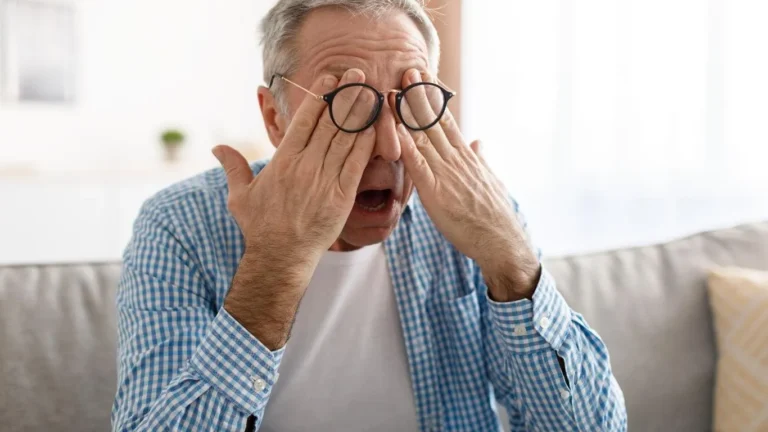Struggling with GERD and Lump in Throat? Discover Real Relief
If you’ve ever had that nagging feeling like there’s a lump stuck in your throat—and no matter how much water you drink or how often you swallow, it just doesn’t go away—you’re not alone. I’ve met so many patients in our Gastroenterology clinic over the years who come in with this exact concern. And guess what? That “lump in the throat” sensation is often linked to something that’s more common than you might think: GERD and feeling of lump in throat—a combo that can be frustrating and sometimes even a little scary. As a Medical Assistant, I’ve seen firsthand how tricky GERD can be because it doesn’t always look like the typical heartburn commercials on TV.
What Is GERD, Really?

Let’s break this down without getting too clinical. GERD, or Gastroesophageal Reflux Disease, happens when stomach acid keeps sneaking back up into the esophagus. Normally, a valve at the end of your esophagus (called the lower esophageal sphincter) shuts tight after you eat or drink. But in GERD, that valve gets lazy or weak and lets acid creep back up. It’s like your stomach acid missed the memo to stay in its lane.
This backward flow can irritate the lining of your esophagus, and that irritation can cause a whole range of symptoms. And here’s where it gets interesting: one of the lesser-known symptoms is that strange, persistent feeling like there’s something stuck in your throat, medically known as globus sensation. It’s not dangerous in most cases, but man, can it be annoying.
Why Does GERD Cause That Feeling of a Lump in the Throat?

That “phantom lump” can feel like pressure, tightness, or just a weird fullness in your throat. As someone who’s helped prep patients for everything from endoscopies to esophageal manometry tests, I can tell you: many folks don’t even know it’s related to reflux until a doctor connects the dots.
The Mechanism Behind the Lump
The acid from the stomach can cause inflammation not just in the esophagus, but also in the throat and voice box. This can trigger muscles in your throat to tense up or spasm, leading to that classic lump feeling. Here’s how it usually plays out:
- Acid refluxes into the esophagus
- Irritation triggers sensitivity in nearby tissues
- Throat muscles tighten or feel tense as a reaction
- You experience a sensation of a lump—without anything actually there
One of our regular patients, a teacher, used to think she was getting emotional during lectures because of that tightening in her throat. But after an evaluation and treatment for GERD, the sensation faded. That’s why getting checked matters—it’s not always emotional or in your head, even if it feels like it is.
Other Symptoms You Might Notice
In my time at the clinic, I’ve noticed that people often brush off or misinterpret GERD symptoms. It’s not just about heartburn! You might also experience:
- Chronic cough
- Hoarseness or voice changes
- Sore throat that doesn’t go away
- Difficulty swallowing (dysphagia)
- Post-nasal drip or the need to constantly clear your throat
All of these can tie back to acid creeping where it doesn’t belong.
Everyday Triggers I See All the Time

Over the years, I’ve noticed common themes when chatting with patients about their lifestyle. Certain foods and habits almost always come up when people describe their GERD symptoms, especially the lump in the throat sensation. Here are the usual suspects:
- Coffee and acidic drinks – Yes, sadly that morning cup can be a trigger
- Eating late at night – Gravity’s not your friend when you’re lying down with a full stomach
- Spicy and fatty foods – These slow digestion and can trigger reflux
- Stress – No joke, high anxiety can tighten your throat muscles and ramp up acid production
It’s always about patterns. I often suggest that patients keep a little food and symptom journal. It sounds old-school, but it’s amazing how quickly you can spot the triggers once they’re on paper.
How GERD Symptoms Can Be Misdiagnosed or Overlooked

One thing I’ve noticed working in a busy gastro clinic is how often GERD and the feeling of a lump in the throat get overlooked or misdiagnosed—especially when patients present with symptoms that don’t scream “acid reflux.” You’d be surprised how many people are referred to ENT specialists, undergo unnecessary imaging, or even get treated for anxiety before anyone connects the dots to reflux.
In fact, I remember a patient—a young guy in his early 30s—who came in convinced he had something stuck in his throat. He was terrified it might be cancer. After a thorough workup and an upper endoscopy, turns out it was classic laryngopharyngeal reflux (LPR), a type of GERD that affects the throat and voice box more than the chest. He didn’t have heartburn at all—just that constant lump feeling and a dry cough. Once we started him on treatment, he noticed a difference within a couple of weeks. Talk about relief!
The Link Between Anxiety and That “Lump” Sensation

Now here’s something that’s super important to understand—and I say this not just as a Medical Assistant but as someone who’s talked to a LOT of worried patients: anxiety and GERD symptoms often feed off each other. That persistent lump in your throat can cause anxiety, which then tenses your throat muscles and makes the lump feel even worse. It’s a frustrating cycle.
What’s more, stress and anxiety themselves can trigger reflux. When we’re anxious, our digestion slows, stomach acid can linger longer, and our diaphragm and esophagus can tighten. It’s not “all in your head,” but the brain-gut connection is very real.
Tips We Give Patients for Managing the Anxiety-Reflux Loop
- Mindful breathing – Deep, slow breaths can ease throat tension
- Gentle neck and shoulder stretches – Releases physical tension that worsens the lump sensation
- Journaling triggers – Track when symptoms spike and what was happening around that time
- Therapy or counseling – Especially helpful when anxiety is a big part of the picture
Some of our patients combine reflux medication with mindfulness exercises or even short-term therapy, and they’ve seen a lot of improvement. It’s not about choosing one over the other—it’s about treating the whole person.
How We Evaluate GERD in the Clinic

If you’re dealing with GERD symptoms and that stubborn throat lump, the first step is always a thorough evaluation. I assist with these all the time, and I can tell you—patients feel a whole lot better once they understand what’s going on.
Common Diagnostic Tools We Use:
- Upper Endoscopy (EGD) – A scope goes down your throat to check for inflammation or damage from acid
- pH Monitoring – Measures how much acid flows into the esophagus over 24-48 hours
- Esophageal Manometry – Checks how well your esophagus muscles are working
- Laryngoscopy – If throat symptoms are prominent, an ENT might check your vocal cords
I always reassure patients that these tests aren’t as scary as they sound. Most are outpatient and quick, and they give your GI provider the info needed to tailor your treatment. We’re not guessing—we’re making data-backed decisions.
Managing GERD Day-to-Day (Without Going Overboard)

Once you’ve got a diagnosis, the real work begins—managing it in your everyday life. I love helping patients brainstorm practical, doable tweaks that don’t feel overwhelming. Because let’s be real: giving up *everything* you love overnight isn’t exactly sustainable.
Realistic Lifestyle Changes That Actually Help
- Smaller meals – Big meals increase pressure on the LES (lower esophageal sphincter)
- Raising the head of your bed – About 6-8 inches helps gravity do its thing
- Waiting 2-3 hours after eating to lie down – Huge difference, trust me
- Cutting back on trigger foods – Start slow, don’t panic. Even reducing frequency helps
- Hydration – Sip water throughout the day, but avoid gulping large amounts at once
I’ve also seen great results with patients who start mild exercise routines like walking after dinner. You don’t need to hit the gym hard—just moving your body can really improve digestion and reduce reflux episodes.
And here’s one last personal tip: listen to your body. Symptoms are signals. That throat lump isn’t random—it’s your body waving a little red flag, asking for attention. Don’t ignore it, and don’t be afraid to speak up and get help. The sooner you catch GERD and manage it, the better your throat (and your sanity) will feel.
Medical Treatment Options for GERD and That Throat Lump Sensation

Once lifestyle tweaks are in place, sometimes they’re just not enough on their own. That’s when we usually bring up medication options. In the gastro clinic, I’ve seen countless patients improve once we found the right combo of treatment—especially those dealing with both GERD and the feeling of lump in throat.
There’s no one-size-fits-all here, but these are the main players we use regularly:
1. Proton Pump Inhibitors (PPIs)
These are the big guns. They reduce stomach acid production dramatically, giving your esophagus (and throat) a chance to heal. Common examples include omeprazole, pantoprazole, and esomeprazole. We typically start folks on a daily dose, reassess symptoms after 2–4 weeks, and adjust from there.
2. H2 Blockers
These aren’t as strong as PPIs but still effective for mild to moderate symptoms or as a supplement to PPIs. Think famotidine (Pepcid) or ranitidine (though that one’s mostly phased out). I’ve seen people use these at night if their reflux acts up while sleeping.
3. Alginate Therapy
Honestly, this one’s underrated. Alginates form a foamy barrier that floats on top of your stomach contents—kind of like a life raft that stops acid from washing up into your esophagus. It’s great for post-meal symptom relief.
4. Prokinetics
For patients with slower gastric emptying, a prokinetic like metoclopramide might be used, though it’s less common these days. We always monitor for side effects and adjust accordingly.
And of course, medication is never forever. The goal is always to treat, taper, and then manage long-term with lifestyle whenever possible.
When Surgery or Procedures Become an Option

Now, this doesn’t apply to everyone, but for those patients who’ve tried everything and are still struggling—surgery or a minimally invasive procedure might be the next step. It’s not as scary as it sounds, and I’ve helped coordinate quite a few of these cases in the clinic.
Common Procedures for GERD:
- Nissen Fundoplication – This is the OG reflux surgery. The surgeon wraps part of your stomach around the lower esophagus to strengthen the valve.
- LINX Device – A tiny magnetic ring is placed around the LES to reinforce closure, and it expands during swallowing.
- Endoscopic Treatments – Newer, less invasive options are emerging that can tighten the LES with tools passed through the mouth—no incisions!
It’s not something we jump to quickly, but for the right patient? It can be life-changing. I remember one woman who was practically living on antacids. After her LINX procedure, she came back for a follow-up beaming—and she hadn’t touched a pill in weeks.
How to Talk to Your Provider About GERD and Throat Symptoms
If you’re struggling with persistent reflux or that frustrating lump-in-the-throat feeling, my biggest advice is: don’t wait. Start the conversation. I’ve met too many people who suffered silently for months or even years because they thought it wasn’t “serious enough” or they were too embarrassed to bring it up.
Here’s how to prep for a productive visit:
- Track your symptoms – Keep a log of when the lump feeling appears, what you ate, and what helped or made it worse.
- List your current meds – Include even over-the-counter stuff like antacids or cough drops.
- Note any other symptoms – Coughing, hoarseness, post-nasal drip… these all matter!
- Ask for testing if needed – If you’ve tried basic stuff and still feel awful, it’s okay to push for next steps.
Doctors really do appreciate when patients come prepared. It helps us give you better care faster.
Final Thoughts: You’re Not Imagining That Lump in Your Throat
After years in the GI world, I can confidently say that GERD and the feeling of a lump in throat is not something you should just “put up with.” It’s real. It’s valid. And it’s treatable. Whether it’s through dietary shifts, meds, mindfulness, or in rare cases, surgery—there’s a path forward.
I’ve walked this journey beside countless patients, and the most important lesson I’ve learned is this: healing takes curiosity, patience, and the willingness to listen to your body. You don’t have to settle for living with discomfort every day. Help is out there—and it starts with asking the right questions and taking that first step.
References
Disclaimer
This article is for informational purposes only and based on personal clinical experience in a gastroenterology setting. It is not a substitute for professional medical advice, diagnosis, or treatment. Always consult your healthcare provider before making changes to your healthcare routine or starting new treatments.

Camellia Wulansari is a dedicated Medical Assistant at a local clinic and a passionate health writer at Healthusias.com. With years of hands-on experience in patient care and a deep interest in preventive medicine, she bridges the gap between clinical knowledge and accessible health information. Camellia specializes in writing about digestive health, chronic conditions like GERD and hypertension, respiratory issues, and autoimmune diseases, aiming to empower readers with practical, easy-to-understand insights. When she’s not assisting patients or writing, you’ll find her enjoying quiet mornings with coffee and a medical journal in hand—or jamming to her favorite metal band, Lamb of God.






